Hair Transplantation Before and After
Table of Contents
Before and After Hair Transplant Images


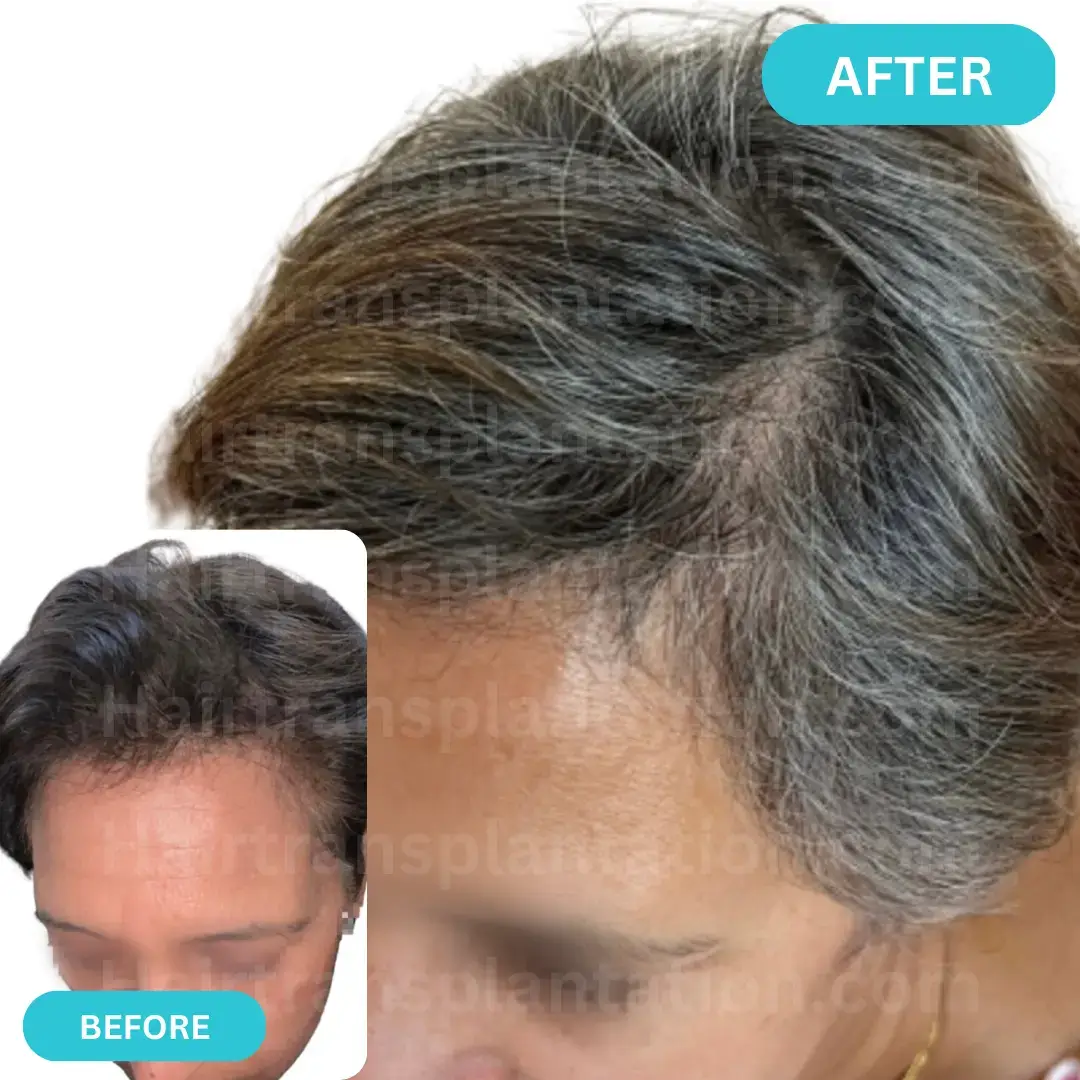
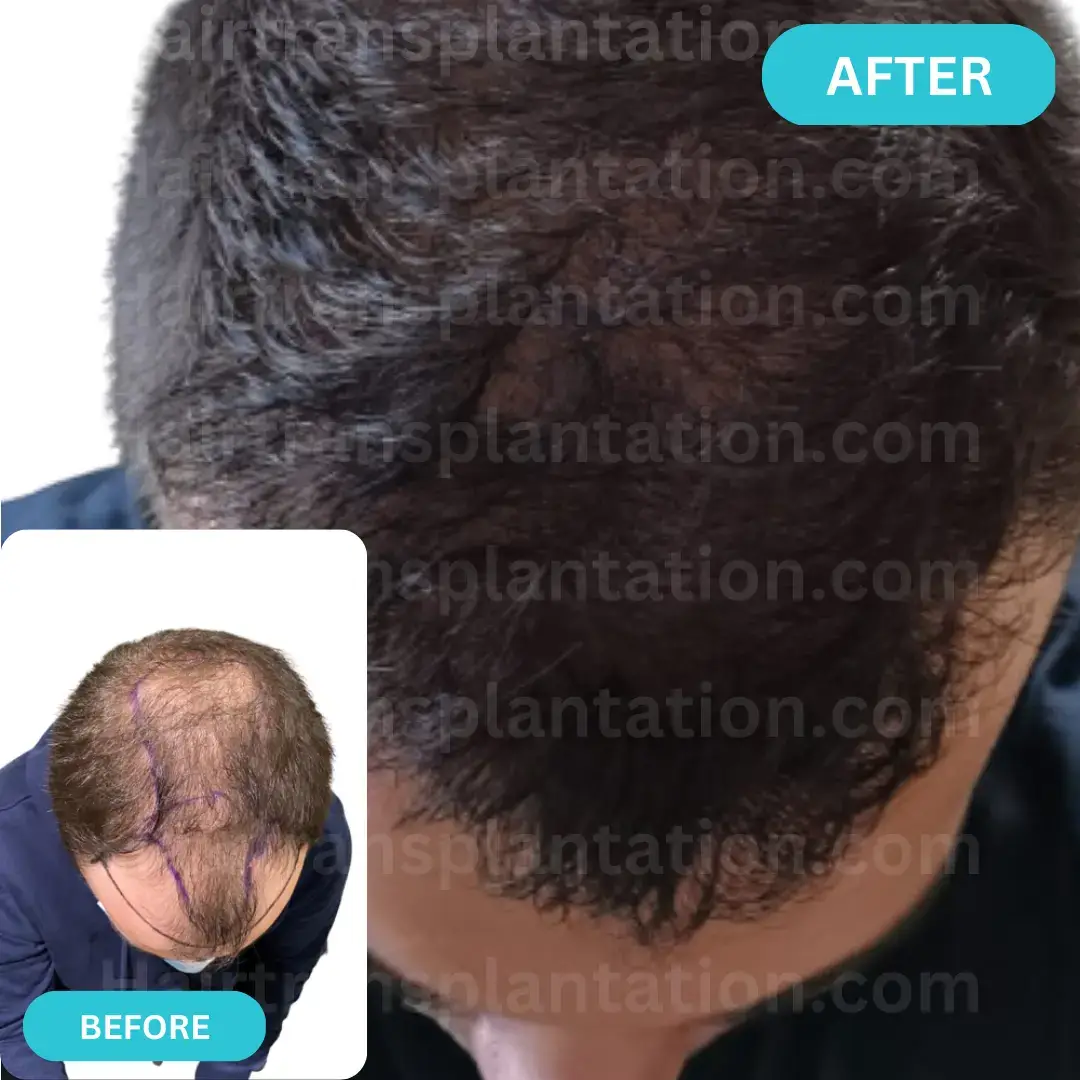
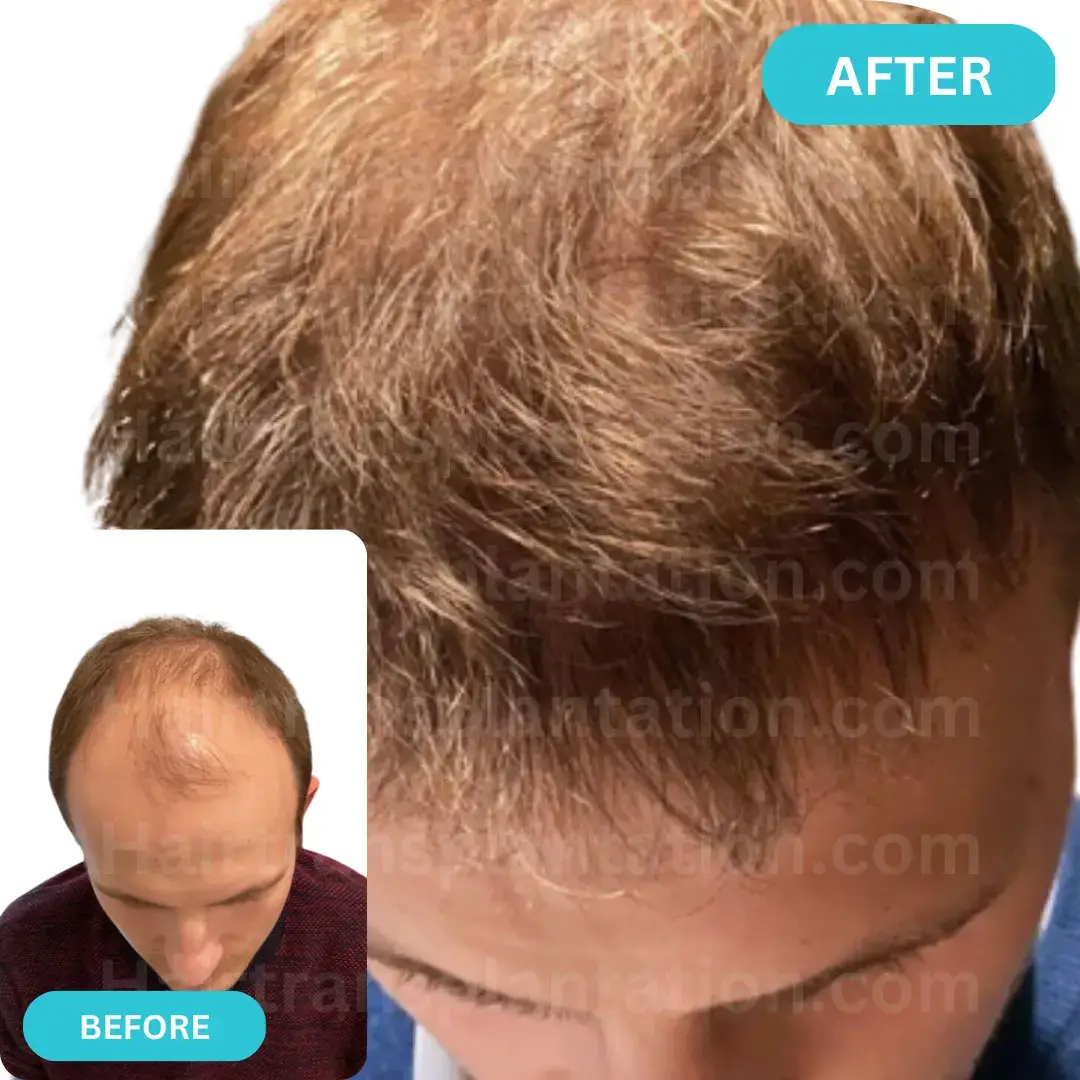

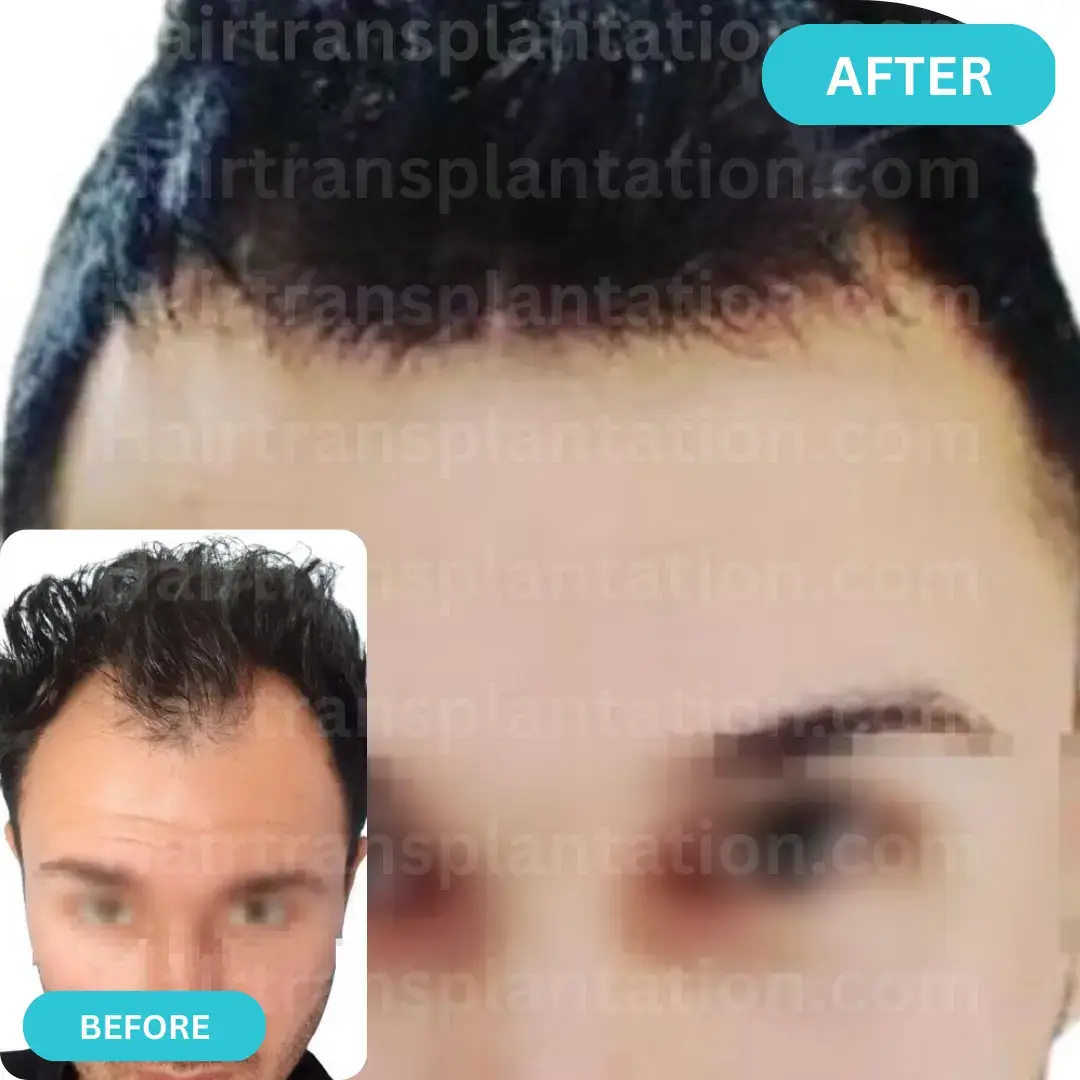

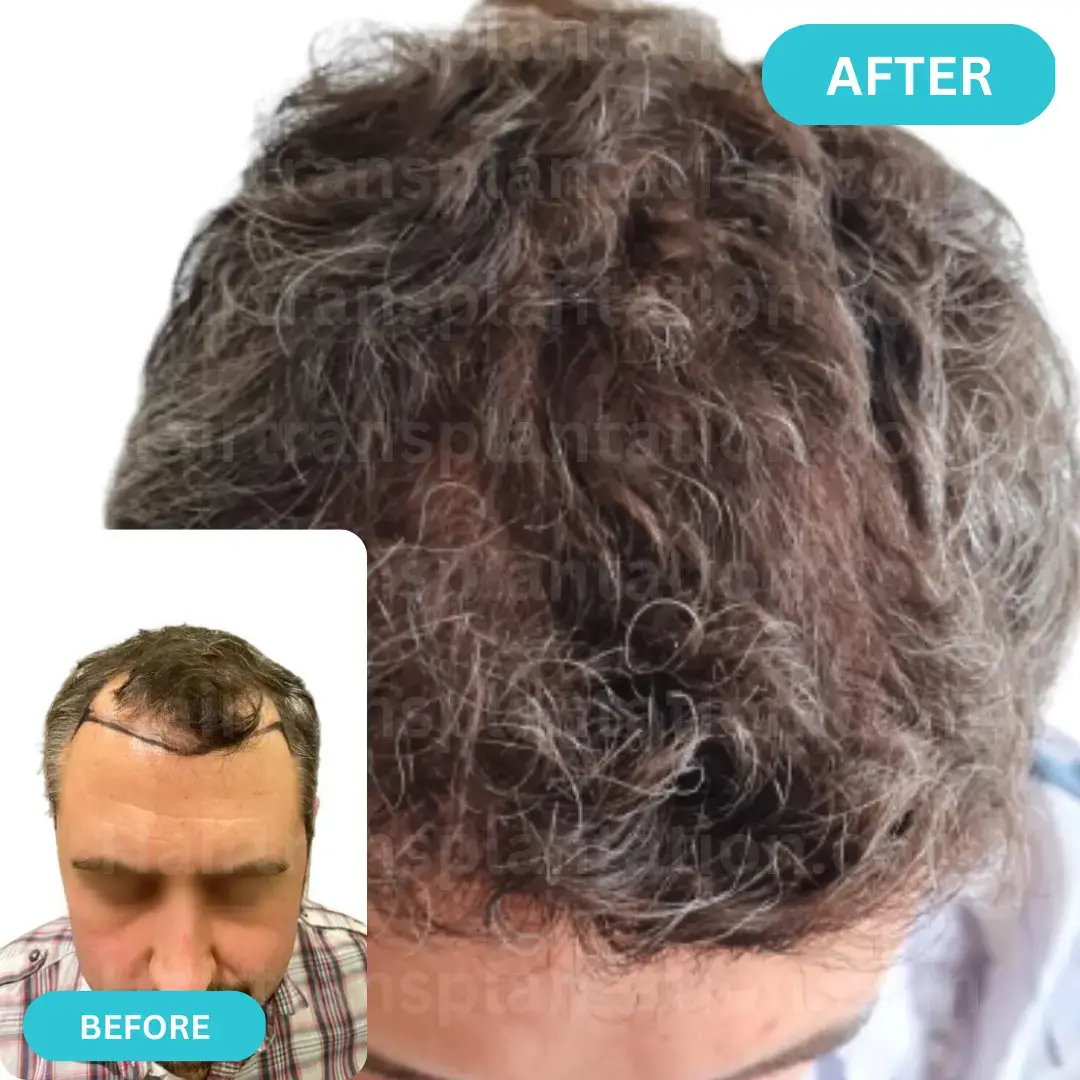
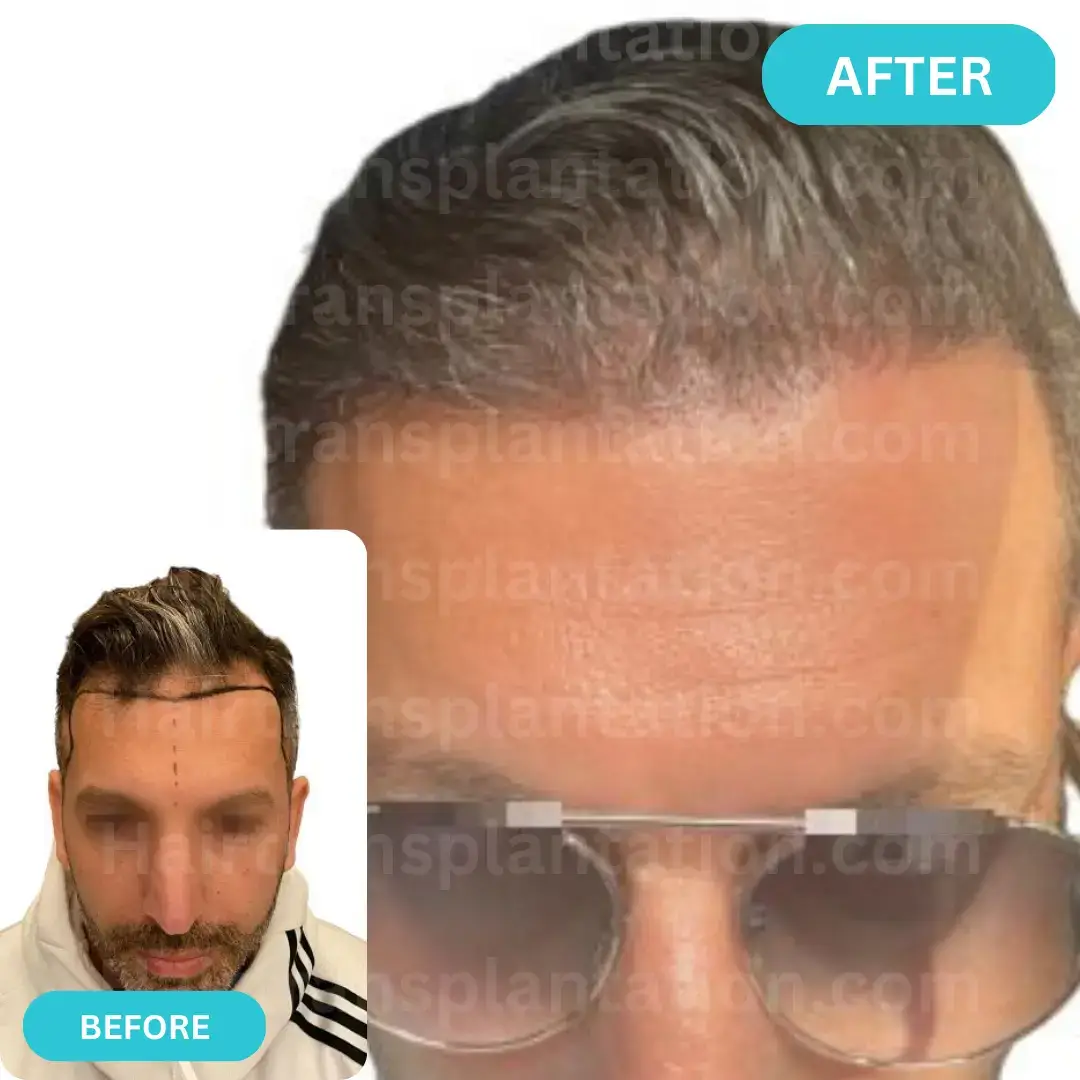
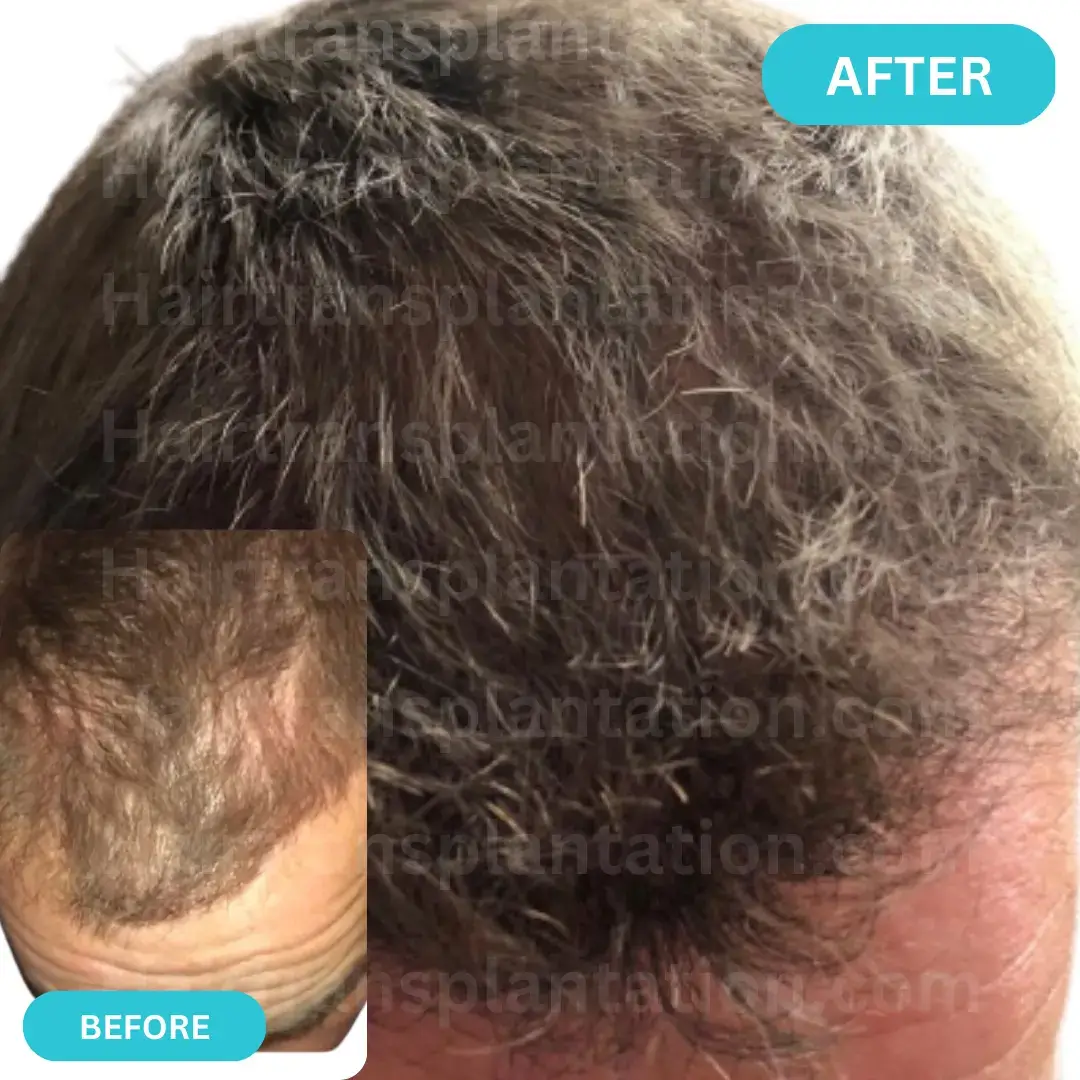



What You Should Know Before Getting a Hair Transplantation
Before you go off looking at all the different images of hair transplantation before and after results, there are a few factors to consider that affect the outcome of this procedure. This is the best way to manage your expectations to ensure you’re not unhappy with your outcome.
- Amount of Hair: If you barely have any hair left on your head, you cannot expect the outcome of a hair transplant to give you a full and thick head of hair.
- Hair Type: This looks at the colour and thickness of your hair. If you have thicker hair, you can expect better hair transplantation results than if you had thinner hair. The same goes for hair colour. Lighter hair provides better results than darker coloured hair.
- Timely Process: You won’t see results immediately. It can take up to 12 months to see your hair transplantation before and after results. This procedure requires a lot of patience.
- Cost: Oftentimes, a hair transplant will need to be paid for out of pocket.
- Complications: There are risks associated with any surgery, and if you happen to be a smoker, you run a higher chance of seeing these risks.
Steps to Take Before Your Hair Transplantation
Once you’ve had a medical consultation with a doctor that will be doing your procedure, they will take you through what hair transplantation before and after steps you should follow. The advice you need to follow before your procedure will differ depending on the type of hair transplant you’re getting. Some of the instructions you could possibly be given to follow include:
- Avoid smoking 24 hours before your procedure: The reason for this is that smoking affects the way your wound will heal and could potentially have negative effects on your recovery. If you find yourself not being able to quit smoking, you should at least put it on hold until you’re fully recovered from your procedure. This is an absolute must if you’re looking for the best hair transplantation before and after results.
- No alcoholic beverages at least three days before your procedure: While it is advised to not consume any alcoholic drinks the full week before your hair transplant, you can push it to at least no drinking three days beforehand. This is because alcohol consumption leads to the thinning of your blood, and you then run the risk of bleeding excessively during the procedure.
- Don’t cut your hair: You will need to have enough hair in your donor area to ensure a successful hair transplant. Many clinics that offer all-inclusive hair transplant packages will often include a haircut afterwards to ensure you look good.
- Massage your scalp daily: Two to four weeks before your hair transplant, you might be advised to massage your scalp daily for 10-30 minutes. In addition to softening the skin and improving its tone, this will also stimulate blood flow in the affected area.
- Avoid taking blood-thinning medications: Your surgeon will provide you with a list of medications to avoid at least two weeks before your procedure. You will often find blood-thinning medications on this list.
These are only a few of the possible instructions that your surgeon may ask you to follow. You’ll benefit greatly from these instructions and make the most out of your hair transplantation before and after results.
The Ideal Candidate For a Hair Transplant
One of the last things to look into before going for a hair transplant is whether or not you’re an ideal candidate for this procedure. Now, just by looking at hair transplantation before and after photos, you would think the only thing required is to have a scalp with bald patches or thinning hair, but that isn’t necessarily the case.
There are various things that need to be looked at before getting a hair transplant, and the best way to see if you’re an ideal candidate is to speak with your doctor. There are a few factors to look at that would make you an ideal candidate for hair transplantation before and after results, and they include:
- Age: When it comes to the ideal candidate, you would have to be at least 25 years or older to even be considered.
- Hereditary Conditions: A big reason for hair loss and a big factor in looking at hair transplant candidates is if there is a hereditary male/female pattern baldness. This often means that there are unaffected areas of the scalp where the doctor can harvest healthy follicles.
- Trauma-Caused Hair Loss: Patients suffering from hair loss caused by trauma are very common, however, the size and location of your trauma area would determine if you’re a good candidate for hair transplantation.
What to Expect After Your Hair Transplantation
When looking at what you need to do for a hair transplantation before and after to ensure optimal results, there really isn’t too much involved when it comes to your aftercare. Your surgeon will give you proper aftercare instructions and so long as you follow these instructions precisely, you’ll be good to go.
Regardless of where you decide to get your hair transplant done, it would always be advisable to have at least one day of bed rest. While not necessary, it is recommended to take a few days off work, assuming you’ve done your transplant locally. This is to give yourself some time to process and recover from your procedure.
It is also possible that you’ll experience a few side effects from undergoing this minor surgery, but there is nothing to worry about. You can expect to gain a full head of hair, as well as your confidence back in about 12 months’ time.
Manage Your Hair Transplantation Before and After Expectations
Many people that suffer from baldness or hair thinning often go to clinics with unrealistic expectations because of what they’ve seen on hair transplantation before and after images. While these photos aren’t necessarily fake, it doesn’t mean you can achieve the exact same look.
The end result will depend on a few factors, your type of hair being one. The type of hair transplant you need, such as FUE or DHI, will also play a role in what your final outcome will be. The best way to manage your expectations is to not only look at hair transplantation photos but also go see and consult with a specialist where you will be told exactly what possible outcomes to expect.
Possible Risks Involved When Getting a Hair Transplantation
Once you look through a bunch of various hair transplantation before and after photos, you’ll instantly want to book yourself in at a clinic. But before going ahead and doing this, it’s important to understand that there are risks involved as with any other medical procedure out there.
Your doctor will always run through the possible risks with you before you go ahead with the procedure. The risks are extremely rare, but it’s always good to prepare yourself for everything. Let’s see what some of the risks include:
- Infection: As we all know, infections come quite easily but getting an infection can easily be avoided if proper hygiene is followed.
- Cost: Getting a hair transplant isn’t cheap, but if you’re willing to travel you can save a lot of money. Turkey offers affordable hair transplant costs.
- Overharvesting: If you choose an inexperienced doctor to perform your procedure, you could potentially suffer from overharvesting. This is when a doctor removes too many of your hair follicles from the donor area.
- Anaesthesia Complications: You could get an allergic reaction to the local anaesthesia. Although rare, it could possibly be fatal.
- Scars: There is a chance your scars from the procedure could become more noticeable, red and extremely painful and itchy.
Hair Transplantation Aftercare
As you may have seen from various hair transplantation before and after photos, all of the patients’ hair look absolutely amazing and without fault. You, too, can achieve this following the hair transplant aftercare instructions given to you by your doctor.
In order to maximise the results of your hair transplant, you will want to strictly follow an aftercare regimen. After having hair transplanted, you should avoid rubbing the grafts and use mild shampoos for the first three months. Normal daily activities can usually be resumed after two weeks.
All the transplanted hairs will likely all out which is anatomically normal, but that doesn’t mean the treatment was unsuccessful. Regrowth usually only starts about three to six months after hair transplants. If you experience any abnormalities in your newly transplanted hairs, you should contact your surgeon immediately. In order to make the most of your hair transplant before and after, then follow these next few steps:
- Wash your hair frequently: Wash your hair with lukewarm water but be careful not to put too much pressure on your hair. You should also try not to wash your hair too vigorously.
- Avoid direct sunlight on your scalp: Excessive exposure to sunlight can cause your transplanted hair to get damaged as well as pigmentation issues.
What to Avoid After Hair Transplantation Procedure
If you want to ensure the maximum end results when looking at your hair transplantation before and after photos, then there are a few things you should avoid within the first few days after your procedure.
- No driving for 24 hours: Because hair transplantation is performed under sedation, you should avoid driving after your procedure. It’s best to get someone to transport you to and from your hair transplant procedure on the day.
- Don’t sleep flat: To the best of your ability, avoid sleeping flat. For around the first seven days you should rather sleep with an elevated head as this helps reduce the risk of swelling.
- Don’t forget about your medication: Your surgeon will give you some prescription medication that is crucial to take. Oftentimes you’ll be given antibiotics to avoid your risk of getting an infection.
- Avoid sleeping on your tummy: While we all toss and turn in our sleep, you should avoid sleeping on your tummy. As mentioned above, sleep in an elevated position.
- Ice is your friend: Avoid forgetting the ice after your procedure. Rest ice just above your eyebrows for around 30 minutes to reduce any swelling that you might experience. However, you should avoid applying ice directly to your scalp.
- No scrubbing and scratching: Don’t wash your hair for the first two days after your hair transplant. You should also avoid scratching your head if it’s itchy. Your very first wash after the transplant is done in a hospital environment by the medical team. On the third day, you will be able to gently wash your hair but avoid scrubbing it.
- No hair dye: For the first six months after your hair transplant, stay away from dyeing your hair! The chemicals found in hair dye can harm your newly transplanted hair follicles which are in a fragile state.
- Don’t get dehydrated: Ensure you drink plenty of water and stay hydrated. This is crucial if you want to see excellent hair transplantation before and after results. Staying hydrated will ensure you recover in a quicker time.
- Stay away from the sun: Don’t expose your scalp to direct sunlight after your hair transplantation.
- No heavy exercise: Avoid exercising excessively. Rather stick to light exercise or go for walks and do yoga. When exercising, you should also keep in mind that you should avoid sweating. Excessive sweating on your head can lead to an infection.
These are just a few of the things you should ensure the optimal hair transplantation before and after results. Just by following all of these steps, you will be looking younger and more confident in no time at all!
Hair Transplantation Before and After Side Effects
Despite following all the necessary hair transplantation before and after steps and instructions, there will still be side effects that you could experience. These are all completely normal so you shouldn’t stress should you experience any of these.
- Shedding: During the initial postoperative phase, many hair transplant patients experience shedding which is also referred to as “shock loss”. After hair transplant surgery, shedding is usually evident within the first 2 to 5 weeks in response to trauma caused to the existing hair during the surgery.
- Scabbing: In the transplant area, patients may notice temporary scabbing due to dried-out blood. During graft implantation, the incisions or micro-punches were made on the scalp for the purpose of implanting grafts, and crusting occurs where dead graft tissue is present. Follow your post-operational instructions for scab removal or else it could potentially lead to poor graft survival as scratching causes your newly implanted grafts to dislodge.
- Numbness: There is a possibility that temporary nerve damage will result in numbness in the transplanted scalp area due to tiny incisions (FUE) and/or micropunch holes (DHI) made during hair restoration. Your nerves will regain their normal functionality as they tend to regenerate on their own.
- Swelling: A temporary side effect of hair transplantation surgery is oedema, or swelling, of the forehead and eyelids, particularly 2–6 days after the operation.
Hair Transplantation Before and After Results
Before going for a hair transplant, it’s important to know what the possible outcome of your procedure will be, so having a look at various before and after hair transplantation images is always advised.
In addition to providing permanent fullness to balding areas, hair transplants boast a 95% recovery rate for total grafts and uniform hair density from top to bottom. Despite this, it is essential to understand what the process is during the days leading up to your procedure, and what to expect afterwards.
Immediate Hair Transplant Results
You can’t expect to see any results overnight. Hair transplantation before and after is a timely process and requires some patience. While recovery is quick, and you can get back on your feet within the next day, you won’t see any physical results. Instead, you might only notice some of the side effects that come with doing a hair transplant.
Hair Transplant Results After 3 Months
Up until now, you have probably experienced many of the side effects that come with getting hair transplantations. Within the first three months after hair transplantation, you would have observed no hair growth as the follicles are in a dormant phase.
Only 3 months after hair transplant should you expect to see some minor changes. This is the part where your hair will start going into the Anagen phase of our cycle for hair growth. Don’t worry if you don’t yet start seeing any results. We’re all different, and you just need to wait a few extra weeks.
In hair transplantation before and after results, the transition into the anagen phase after around three months marks an important milestone in developing hair growth and density because this marks a significant advancement in the development of hair results. Once you’ve reached this phase, you can expect to see your hair grow and thicken over the next few months.
Hair Transplant Results After 6 Months
You will begin to see an increase in your hair growth rates and there will also be a noticeable difference in your hair density around the six-month mark, which is also commonly referred to as the hair-busting stage.
Once you reach this stage, your transplanted hair will start growing at roughly the same speed that the rest of your hair grows at. This is usually around 1-2cm per month depending on your type of hair. When it comes to the hair-growth stages, this is the Emergent stage, and you will be able to see around 50% of your hair transplantation before and after results.
Hair Transplant Results After 12 Months
When it comes to the hair transplantation before and after photos you see, these are often photos taken after the 12-month mark as it shows the maximum result of the procedure.
Ultimately, the end results of your procedure will depend on a few things, such as the type of hair transplant method you opted for, your overall hair density and growth cycle, and especially how you followed the doctor’s hair transplantation before and after instructions and aftercare.
The hair grows and thickens to its full potential within one year after a hair transplant for most people. However, it’s not uncommon for others to not see the full effects of their hair transplant until 18 months after their surgery.

Different Types of Hair Transplantation Before and After
When it comes to looking at hair transplantation before and after pictures, it’s important to understand that you might not get exactly what you see. This is because a few factors play a role in the overall outcome.
There are different types of hair transplants available, and each will provide different hair transplantation before and after looks. There are different hair transplants methods you can choose from, such as:
- FUT (Follicular Unit Transplant)
- FUE (Follicular Unit Extraction)
- DHI (Direct Hair Implantation)
- FUE & DHI Combination
Below we’ve laid out who gets these treatments and what to expect from them for a better understanding of what the hair transplantation before and after results of each of these methods are.
FUT Hair Transplantation Before and After
The FUT hair transplant method is the best option if you’re looking to get a fuller head of hair. However, you should be aware that you will certainly end up with a scar. This can luckily be covered up once your hair grows out.
The reason for the scar is because this method involved the surgeon removing a thin strip of skin from the back of your head. The actual size of this strip will ultimately depend on how many follicles will be needed for the implantation process.
FUE Hair Transplantation Before and After
If you are suffering from balding, then you should consider the FUE treatment. You can go from severe balding to a full head of hair in no time! There are two different types of FUE methods, the standard one and then the FUE Sapphire method. The main difference between the two is that the standard method makes use of scalpels and the other makes use of a Sapphire Blade which is less invasive.
DHI Hair Transplantation Before and After
If you have hair that is thinning, then you may find that a DHI hair transplant can be beneficial to you. The DHI method is very similar to the FUE method when it comes to follicular unit extraction from the donor site. However, the difference between the two ultimately comes in with the insertion procedure.
The DHI method makes use of a medical instrument called a Choi Implanter which is used to insert the hair follicles into the troubled area.
Combination Hair Transplantation Before and After
A rarity when it comes to hair transplants is the combination method. This is a treatment that is a trademark for a hair transplant in Turkey called IdealofMeD, and it is simply a treatment that combines both the FUE and the DHI method. The hair transplantation before and after results will just be a combination of what you’d get from each of these treatments separately.
What to Make of Hair Transplantation Before and After
There’s a lot of thought that goes into getting a hair transplant, but you can feel at ease knowing that this process has up to a 95% success rate. Get your confidence and feel good when looking at your hair transplantation before and after results. Just make sure that when going for a hair transplant treatment, you get the full list of dos and don’ts from your doctor.
Frequently Asked Questions

Jo
Last updated by Jo on January 5, 2023. Content medically reviewed by D. Demirel, MD.
- Hair transplant surgery. Hair transplant surgery – Better Health Channel. (n.d.). Retrieved July 6, 2022, from BetterHealth.
- Unger, W. P. (2005, December). Hair transplantation: current concepts and techniques. In Journal of Investigative Dermatology Symposium Proceedings (Vol. 10, No. 3, pp. 225-229). Elsevier.
- Jiménez, F., & Poblet, E. (2013). Is hair transplantation indicated in frontal fibrosing alopecia? The results of test grafting in three patients. Dermatologic Surgery, 39(7), 1115-1118.
